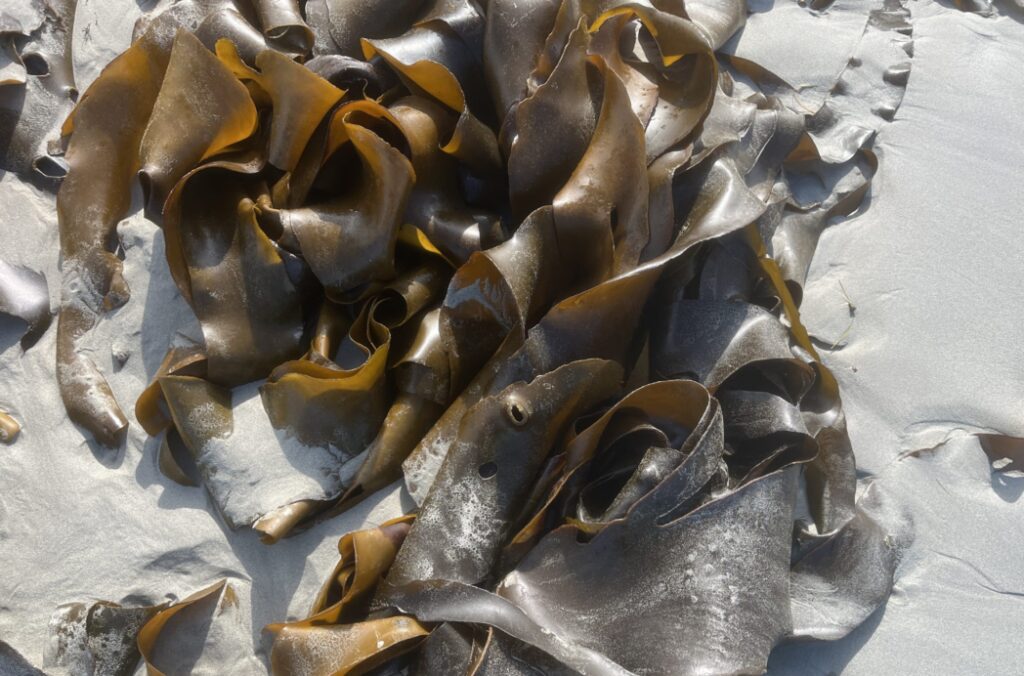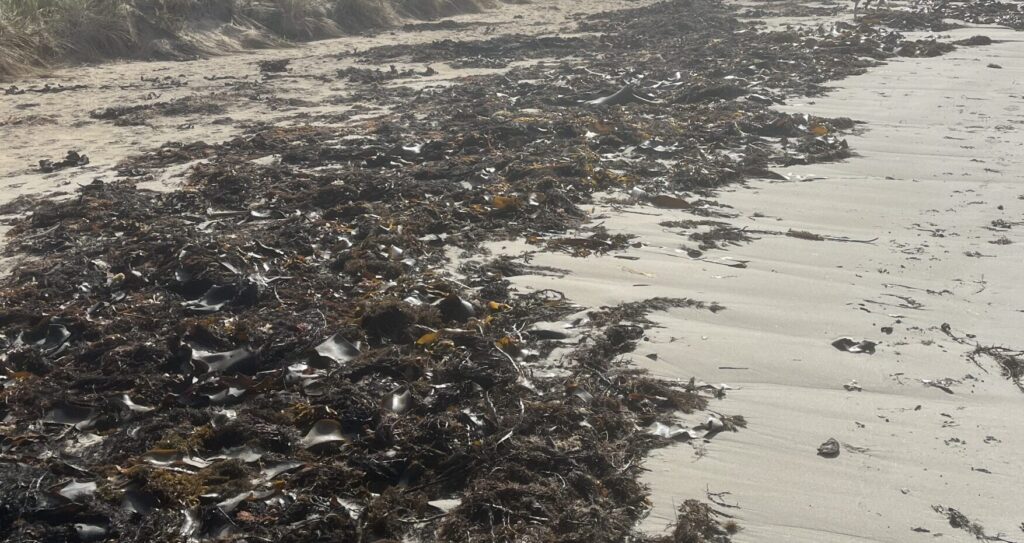Species of the Month: What lives in a forest but never on land?
Sounds like a riddle perhaps? But no, the answer is kelp – specifically in this case, bull kelp.
Bull kelp (Durvillaea potatorum) is relatively abundant off the southern coast of Australia and the evidence washes up along our coastline in clumps and strands after big storms. We don’t often think of marine algae in the context of the ecological communities they grow in, but in fact they are no different to communities on land, they develop and grow according to the prevailing habitat and climatic conditions they are suited to, and they in turn support a suite of species, which they have symbiotic relationships with.
Bull kelp is a large, brown seaweed that can grow up to 10 meters in length. Like many kelp species it can form dense underwater forests that provide habitat for a diversity of marine animals, including fish, crabs, and sea urchins. Because they grow very rapidly (up to a remarkable 10 cm/day!) kelps drive a lot of biological activity in the marine and intertidal zones, and their biomass also stores massive amounts of carbon.

Bull kelp also has an important ecological function when it washes up on our beaches and starts to decay. Although people may find beach algae something of a smelly annoyance to squelch through on the way to the water, it is actually an incredibly important food source, supporting large number of invertebrates, which in turn are food for other species, including our many species of shorebirds.

In addition to its ecological importance, bull kelp has cultural significance for First Nations people. It has been recorded as being used in traditional medicine and as a source of food and materials for tools and clothing. Bull kelp is one of a number of algal species harvested for commercial purposes from some beaches in southern Australia.
At NGT we don’t get the chance to work directly with marine species as often as their terrestrial cousins, but we do have a keen interest in ecosystem function and these keystone species – upon which many other species rely – are always fascinating to better understand.
Like many other kelp species, bull kelp is under threat from climate change. Rising ocean temperatures and ocean acidification are affecting the growth and reproduction of the algae as well as its ability to sequester carbon. Bull kelp distribution is already noted to be contracting and moving southwards due to ocean warming, a similar trend observed in the distribution of giant kelp.
So next time you are walking along the shoreline looking at the accumulated beach wrack, think about the important role of these beautiful giants of the sea, which are so critical for our marine and coastal food webs.
